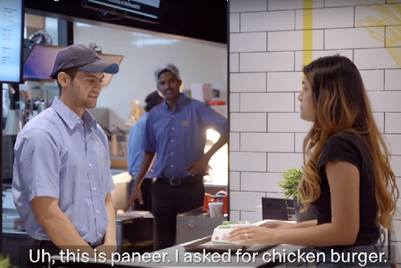The elections are over. And this is not about parties, candidates and the linked emotions in any manner. This is a perspective of the election process seen through a marketing lens.
Most of us nowadays are living an Instagrammed existence and are suffering from FOMO even if we are away from our smartphone for a few minutes. We are glued to Whatsapp forwards of largely bad jokes . More importantly we have moved to e-commerce, e-payments and have embraced digitisation.
While marketers and brands are trying to adapt to this tectonic shift on many fronts, let us examine the good old electoral process which seems to be still caught in an anachronistic web, EVMs notwithstanding.
From a marketing perspective when I asked a few people on their voting preferences, the responses were mostly party specific and not candidate specific. Many did not even know who their candidates were.
This brings into focus the ‘Tripadvisor’ and the ‘Amazon Product Reviews’ model.
Today, before booking a hotel, customers go and read Tripadvisor reviews from genuine customers. This has converted supercilious hotel properties into some sort of service oriented and customer focused organisations that think twice before refusing check-ins stating crazy hour check in rules or declining a late check-out request from a family with small children.
Now between mainline media engines, media channels and even indigenous app developers there has been no adaptation of this concept in terms of information, rankings and ratings about candidates standing for election.
Imagine a ‘know your candidates’ app or website run by an independent entity that includes information about all the candidates within each constituency. This should include aspects like criminal records as well as the candidate’s non-political credentials in terms of education, occupation etc. If the candidate has had any previous election history, then a fair assessment of promises made versus promises kept can be provided along feedback from residents of that constituency in terms of how their lives improved.
After all, customers do not buy say a washing machine today simply on the basis of a brand's claims. They first go online, check reviews on sites like Amazon, read comments of actual customers and then make a decision. The key enabler for this is a neutral and reliable information source that validates a brand's claims.
Similarly a localised candidate and constituency information portal or app can go a step further and actually start what is called an ‘Accountability Index’ for each candidate that is elected.
Think of the ‘Service Index’ standard that brand Changi Airport has set on this where people score not just immigration services but even toilets immediately after usage. People in a constituency being able to score a candidate's performance and able to access these scores can make a huge difference to the entire election process.
Another aspect is a simple assessment of all pre-election promises made versus actual progress made updated on a periodic basis. For example, if someone had said that 25 hospitals will be built in the constituency or 24-hour water supply provided then an as of date tracker could show the current level of progress on the hospital plan and the strides made in ensuring regular water supply.
I was pleasantly surprised to discover that such an app already exists branded ‘Neta App’ - a concept that needs mainstreaming.
In the pre-smartphone era, a bar of soap would have the name of the company manufacturing it and perhaps a registered address or a pin code. Today even a bar of soap will have the brand's website URL, a toll-free customer service number and an email id for both purposes - queries and complaints. And most brands that want to sustain and grow will ensure that there is a solid response mechanism for queries or complaints received through any of these channels.
However in our unique Indian political landscape candidates appear with huge promises before the election and simply vanish like the protagonist in Mrinal Sen's classic ‘Ek Din Achanak’ afterwards.
Like that humble bar of soap there has to be an elected representative access mechanism for the population to send issues and complaints on an ongoing basis. A toll-free number or a complaints or issues email equivalent that has become mandatory even for a low value bar of soap.
Now think of your last TripAdvisor review good or bad. Imagine that level of empowerment of individuals in the election process.
 (The author is a senior consumer marketing and financial services professional based in Vietnam who has lived and worked in India, Japan, Hong Kong, Singapore and Dubai. His best-selling book "Marketing Chronicles" is available on Amazon India, Flipkart and at key online/ physical book stores.)
(The author is a senior consumer marketing and financial services professional based in Vietnam who has lived and worked in India, Japan, Hong Kong, Singapore and Dubai. His best-selling book "Marketing Chronicles" is available on Amazon India, Flipkart and at key online/ physical book stores.)

 (The author is a senior consumer marketing and financial services professional based in Vietnam who has lived and worked in India, Japan, Hong Kong, Singapore and Dubai. His best-selling book "Marketing Chronicles" is available on Amazon India, Flipkart and at key online/ physical book stores.)
(The author is a senior consumer marketing and financial services professional based in Vietnam who has lived and worked in India, Japan, Hong Kong, Singapore and Dubai. His best-selling book "Marketing Chronicles" is available on Amazon India, Flipkart and at key online/ physical book stores.)


.jpg&h=334&w=500&q=100&v=20250320&c=1)
.jpg&h=334&w=500&q=100&v=20250320&c=1)
.jpg&h=334&w=500&q=100&v=20250320&c=1)


.jpg&h=334&w=500&q=100&v=20250320&c=1)








.jpg&h=268&w=401&q=100&v=20250320&c=1)
.jpg&h=268&w=401&q=100&v=20250320&c=1)
.jpg&h=268&w=401&q=100&v=20250320&c=1)
.jpg&h=268&w=401&q=100&v=20250320&c=1)
